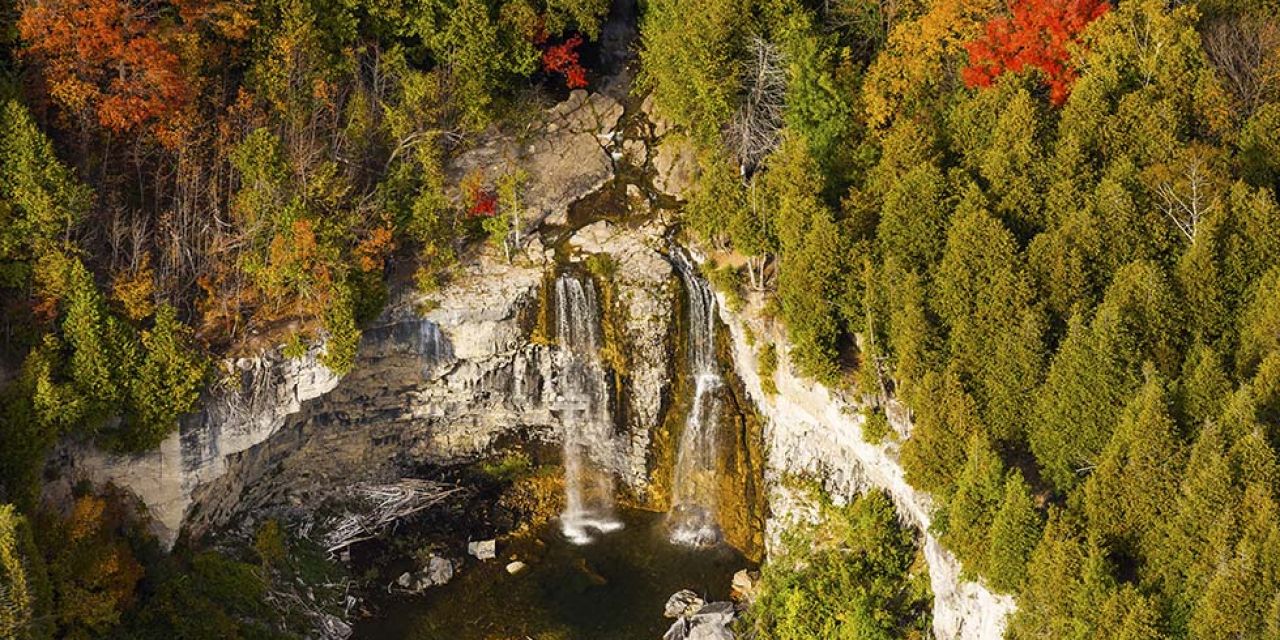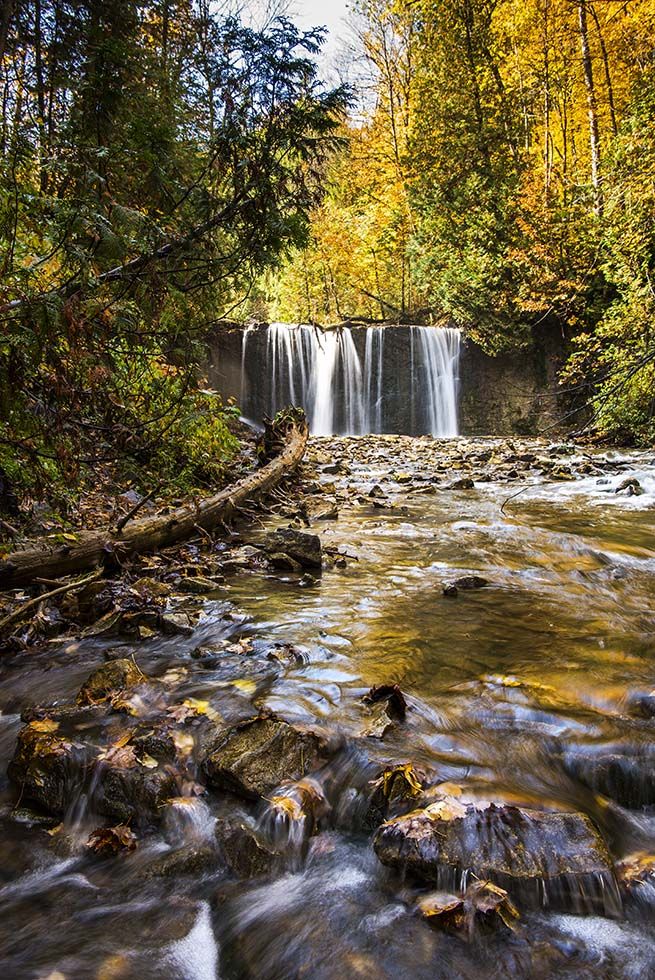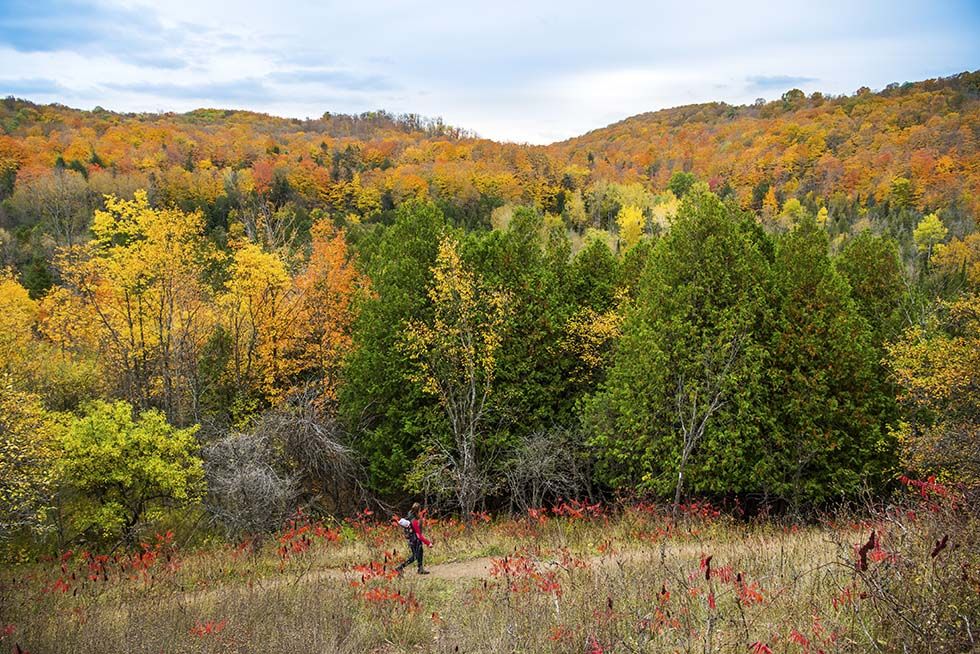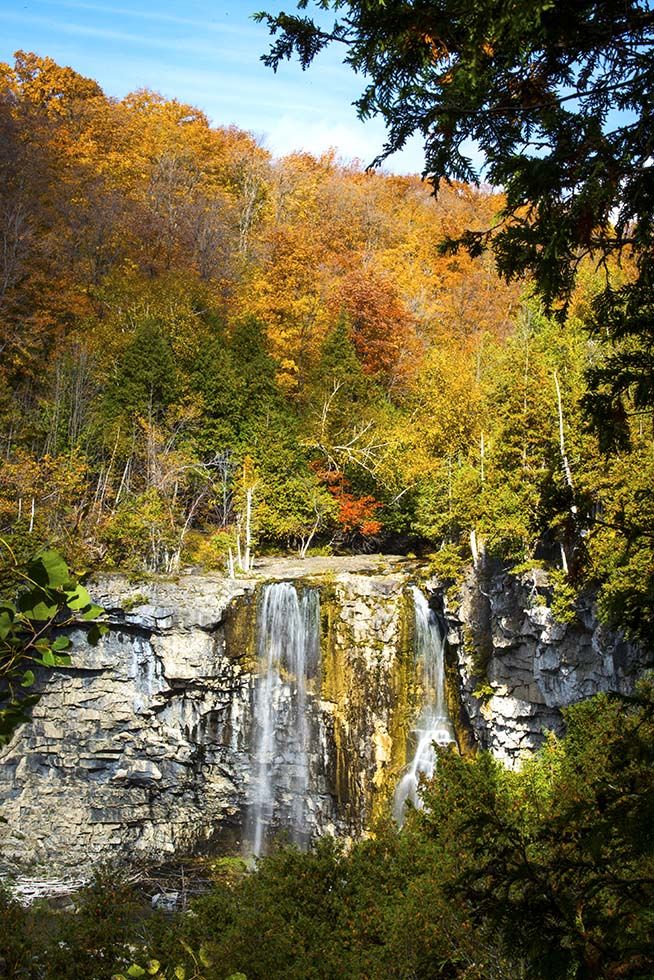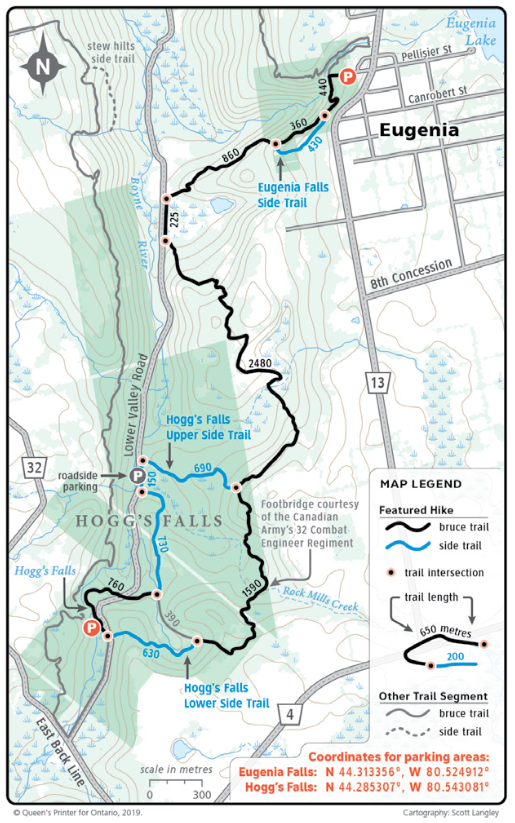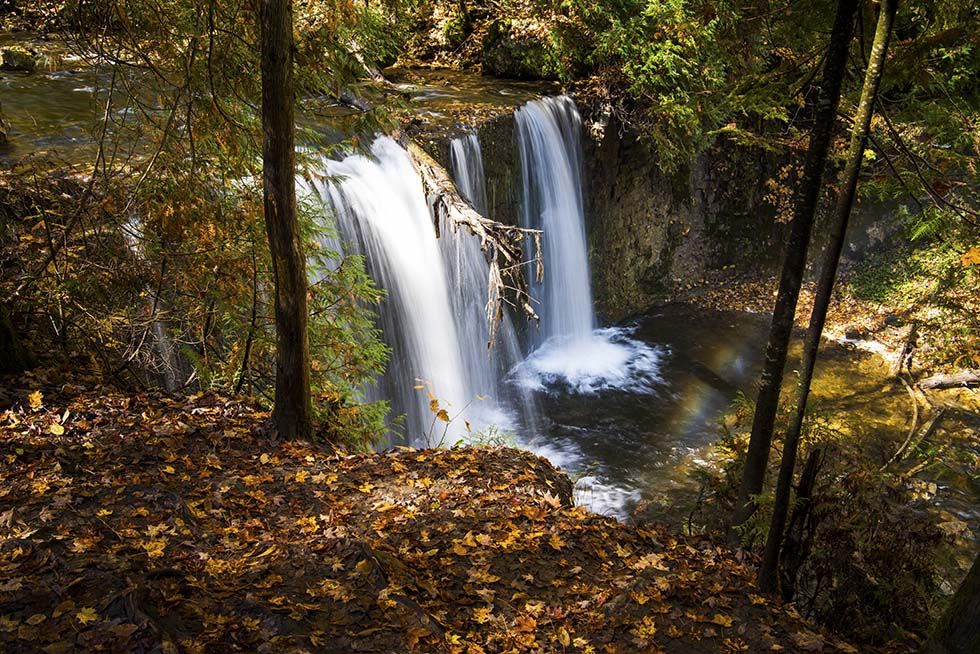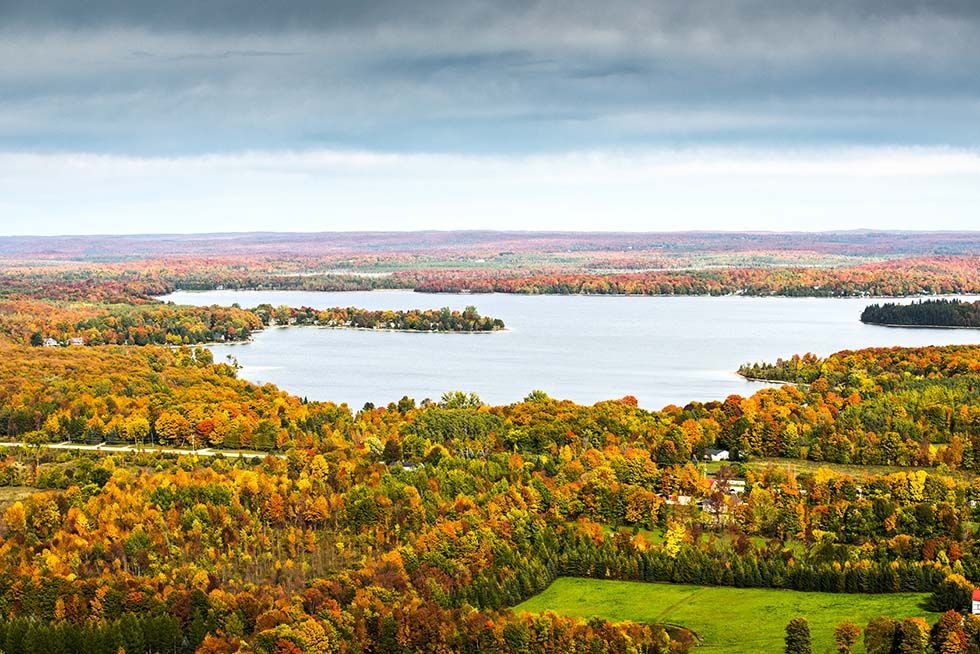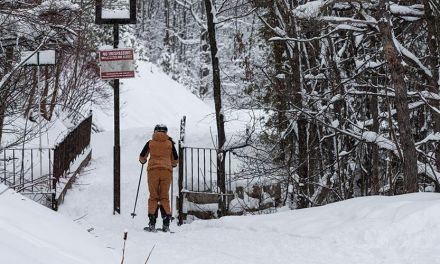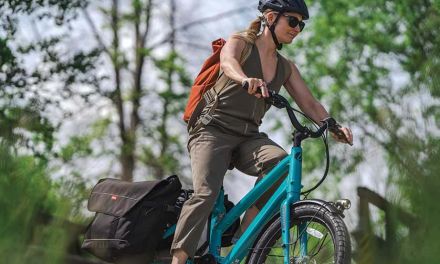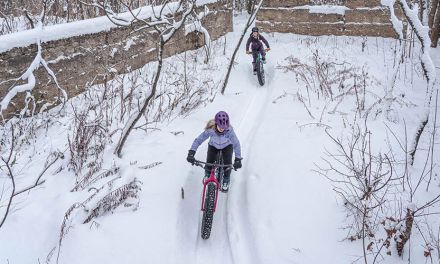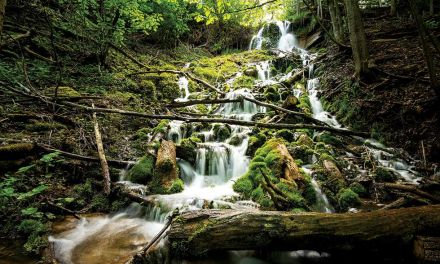A Hike Steeped In History Story and Photos by Clay Dolan
In the late 1870’s William Hogg built a sawmill along the picturesque Boyne River north of Flesherton. The sawmill sat just upstream of a small, seven-metre waterfall, which Hogg referred to as “Little Falls”. When the mill burned down in 1888, Hogg looked to relocate up the eastern bank of the Beaver Valley to Eugenia Falls. Here Hogg built a small Hydro Generating Station on the Beaver River. The paddle- wheel generator, completed in 1893, was only able to generate 70kW of energy— which was just enough to power a chopping mill and lights for the tiny villages of Eugenia and Flesherton.
A second attempt to harness the energy of the Beaver River occurred in 1906 when a group of Toronto Businessmen purchased the operation from Hogg and formed The Georgian Bay Power Company. The company built a tunnel through the hill beside the top of the falls to the valley floor. The plan was to divert the Beaver River through the tunnel to a generating plant below. In the end the capacity of the river was insufficient to produce enough power and the tunnel was never used. The project was abandoned, the tunnel filled in and the Georgian Bay Power Company went bankrupt.
As the saying goes, third time’s a charm; in 1915 the Ontario Hydro-Electric Power Commission acquired the property from the The Georgian Bay Power Company, as well as 1,900 acres of upstream farmland.
The farmland was immediately cleared and the Beaver River dammed, creating a large reservoir later called Eugenia Lake, named for Princess Eugénie (wife of Napoleon III). A generating station was built in the valley and water was supplied to the twin generators by wooden penstocks (sluices).
In 1920 a third generator was added bringing the output of the station up to 4,500 kW—enough electricity to power the entire region including Owen Sound and Collingwood. In 1988 the generating station went through a major overhaul, which increased the capacity to 6,300 kW. The 180 metres of head (vertical drop) is the largest of all hydraulic stations east of the Rocky Mountains. Damming this section of the Beaver River has slowed the flow of water over Eugenia Falls to a trickle, but with its 30-metre plunge into the Cuckoo Valley gorge below, it’s still one of the area’s most popular waterfalls. Hogg’s Falls on the Boyne River has a modest seven-metre drop, but the amount of water flowing over the falls makes it an impressive sight. The Bruce Trail connects both falls and provides stunning views along the challenging seven-kilometre hike.
Hikers can travel from point A: EUEGNIA FALLS to point B: HOGG’S FALLS (or vice versa), or choose to loop the side trails, creating a 13-kilometre round trip. Although the trail undulates, the elevation drops considerably when travelling from Eugenia Falls to Hogg’s Falls. For this hike we decided to feature the entire three-to-four-hour loop beginning and ending at Eugenia Falls.
The entrance to Eugenia Falls Conservation Area is located at the end of Pellisier Street in the village of Eugenia. The paid parking lot is open from 10am to 6pm daily (LON 80.52660217 LAT 44.31325230) and is a short walk to the falls. Follow the paved path to the falls where you will join up with the main tract of the Bruce Trail. If you have a little extra time for exploring follow the trail to the right—it crosses the Beaver River via a pedestrian bridge a couple hundred metres upstream. Continue on and you will see a stone arch which was the former entrance to the power-generating tunnel. Only a short distance further you’ll enjoy one of the most spectacular lookouts in the upper valley. It is imperative to stay on the marked trail as access to the base of the falls, standing on top of the falls and travelling beyond the fence/ barrier is strictly prohibited.
To begin the trek down to Hogg’s Falls, follow the main track of the Bruce Trail (marked with white blaze) south from the parking area. The trail descends through a cedar grove before it gradually climbs to an open lookout providing unobstructed views of the valley. The trail then plunges down to Lower Valley Road and continues to the left for a short distance.
The trail turns left again off the road and back into the forest. Here you come across sap lines for a maple syrup operation. This section of trail is also part of the newly acquired Lower Valley Road Nature Reserve. Thanks to private donors, the Bruce Trail Conservancy was able to acquire 67 acres along the Lower Valley Road ensuring that this tract of land remains a protected, natural oasis.
The trail continues to weave its way through mature forest and across undulating terrain until you reach an upland meadow. Then it is back down until you eventually connect with the blue blaze of the Hogg’s Falls Upper Side Trail.
Follow the white blaze of the main trail left through forested high ground and then down to Rock Mills Creek. Here the trail crosses along a bridge that was built with the help of the 32 Combat Engineering Regiment of the Royal Canadian Army.
At the next intersection take the Hogg’s Falls Lower Side Trail to the left, which then crosses the Lower Valley Road and rejoins the main trail. Follow the white blazes of the main trail to the right past the parking area (LON -80.54204084 LAT 44.28865596). A short distance ahead the Boyne River comes into view and you can hear the rushing water as it cascades over Hogg’s Falls. Before you reach the falls however, you can see the concrete remains of William Hogg’s sawmill.
Continue along the main trail until you reach Hogg’s Falls Upper Side trail and follow the blue blaze to the left. Here you will travel along old logging roads and then back onto Lower Valley Road. The trail turns right off the road and climbs through mature forest to connect back with the main tract. Now you retrace your steps for the long climb back to Eugena Falls.
The Eugenia Falls to Hogg’s Falls hike is part of the Falling Waters Trail which winds its way through the southern portion of the Beaver Valley. Steeped in history, this hike not only provides stunning views, it gives you glimpses into our past and the monumental effort it took to produce energy for the region. The damming of the Beaver River created Lake Eugenia, which has become a popular destination for cottagers and boaters, and is considered a hidden gem in Grey County. This hike also highlights the hard work of volunteers and donors to The Bruce Trail Conservancy, who together have raised hundreds of thousands of dollars to secure a 13-kilometre corridor in the southern end of the Beaver Valley.

